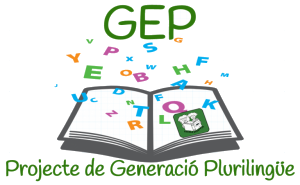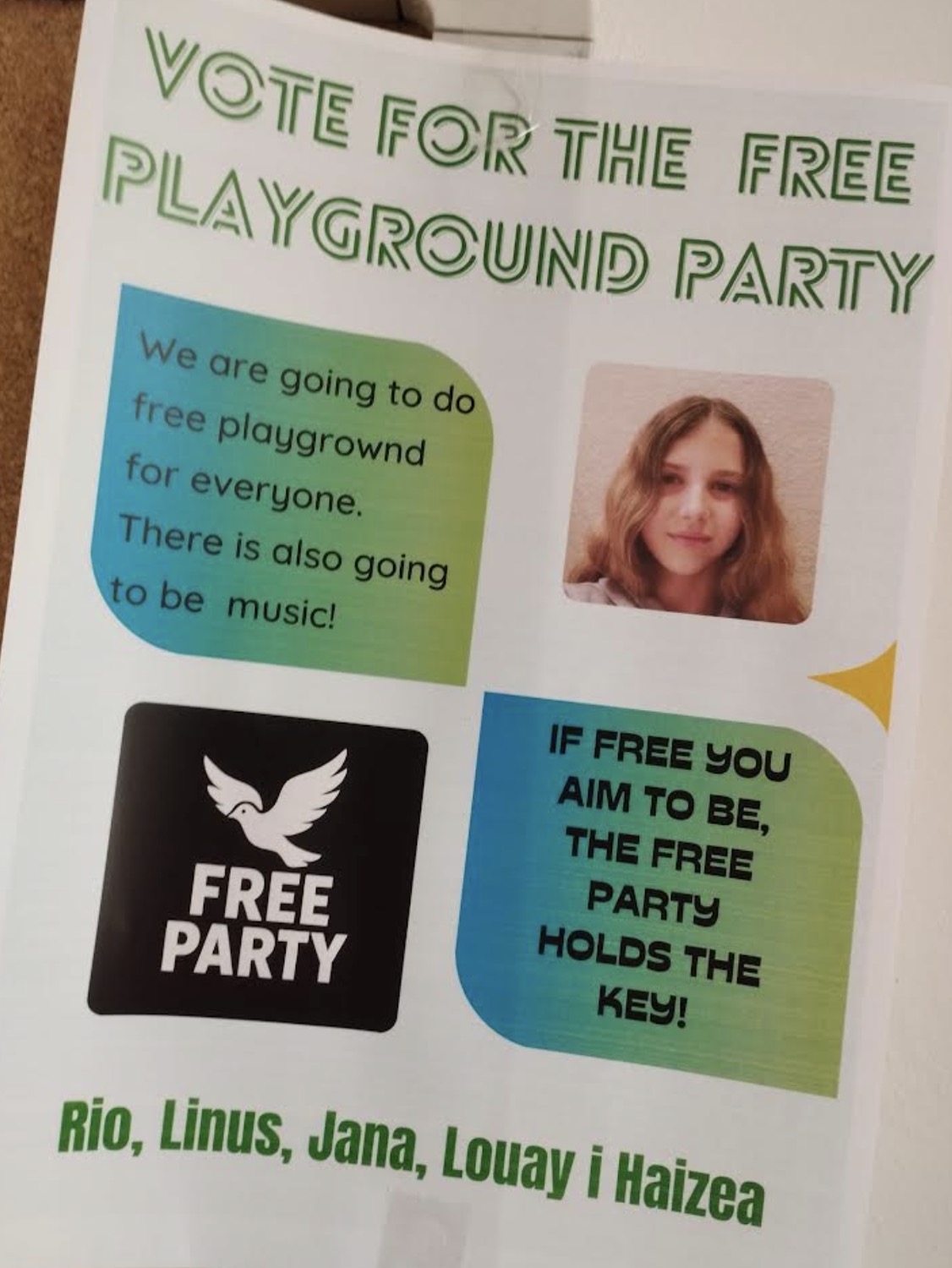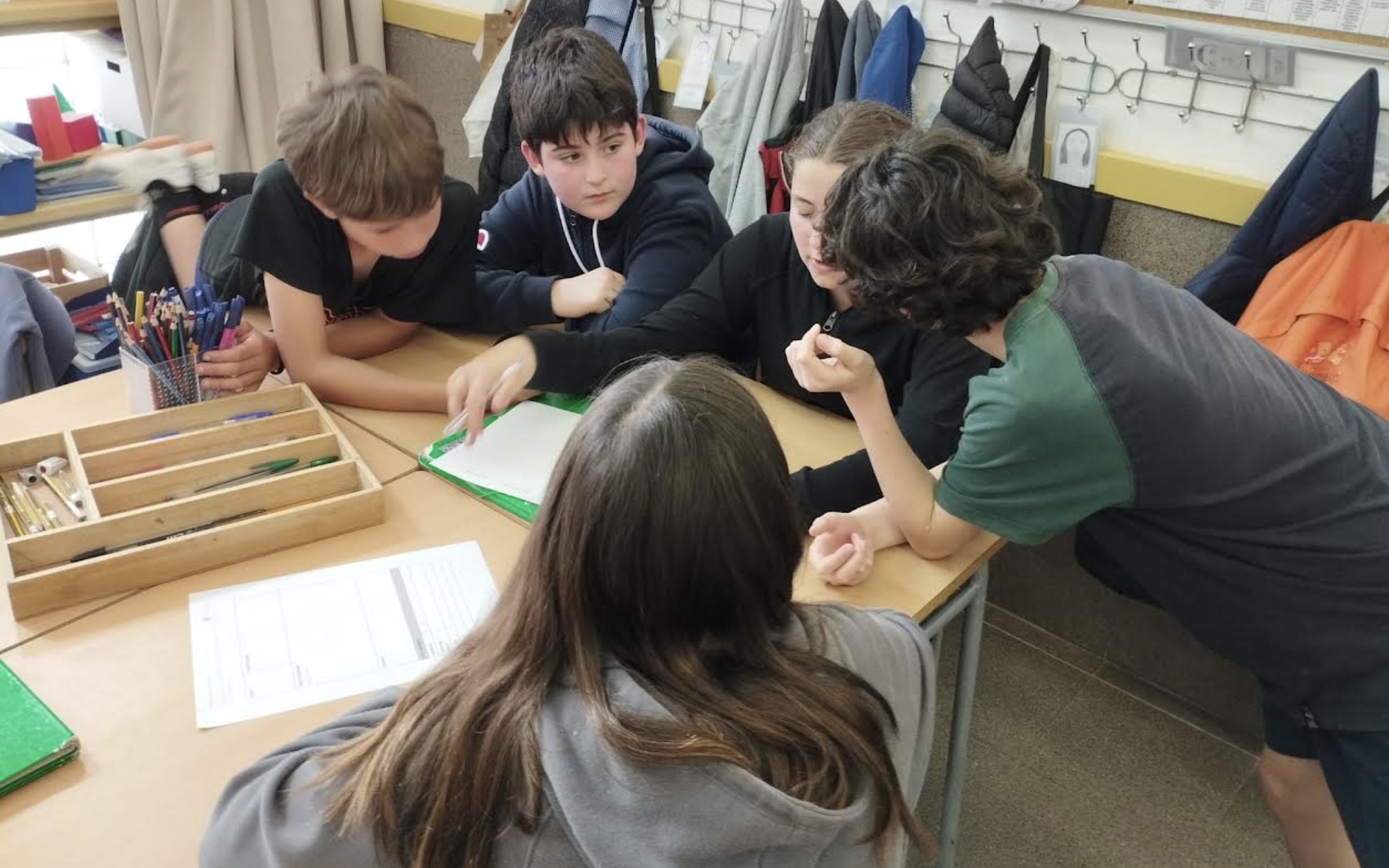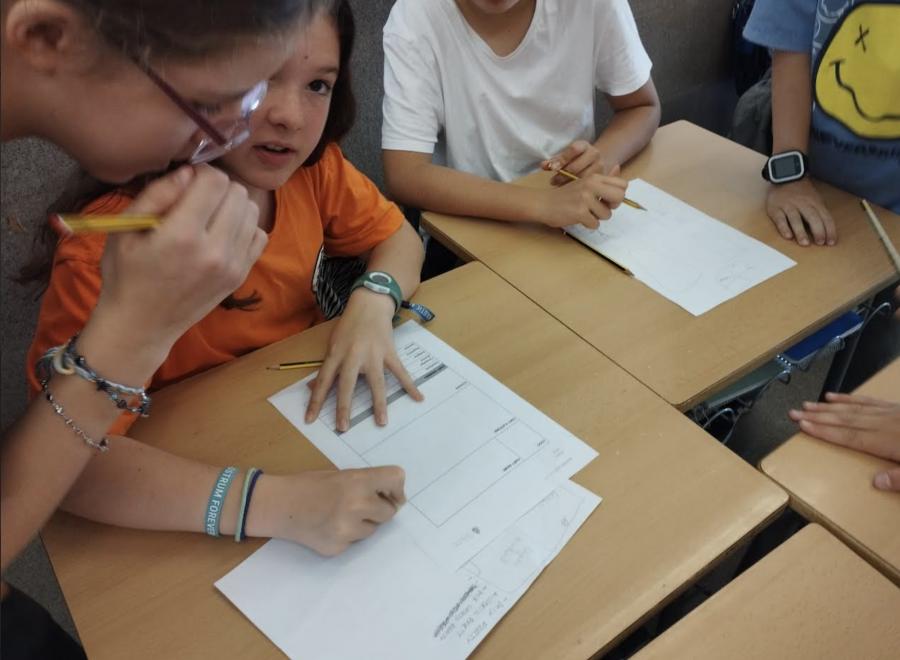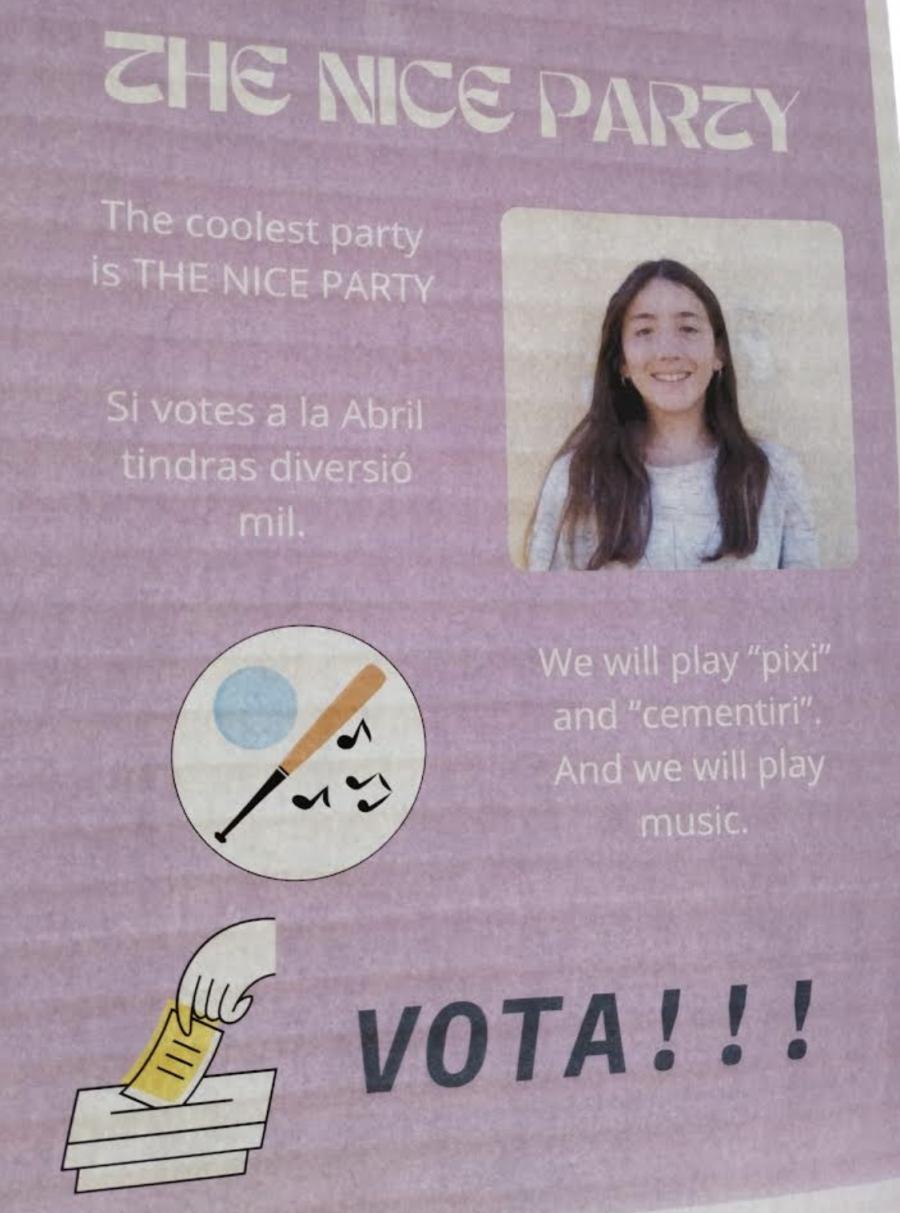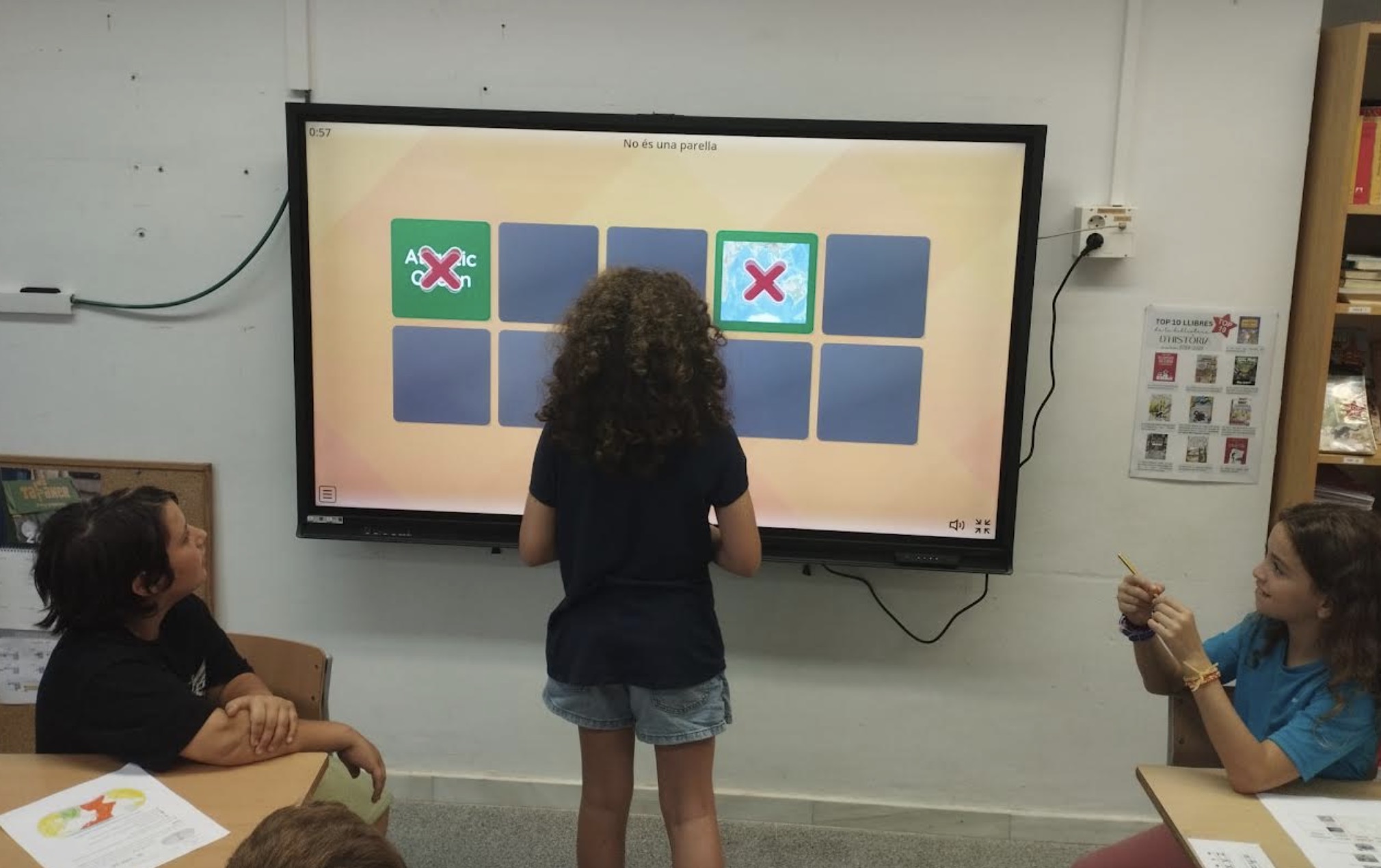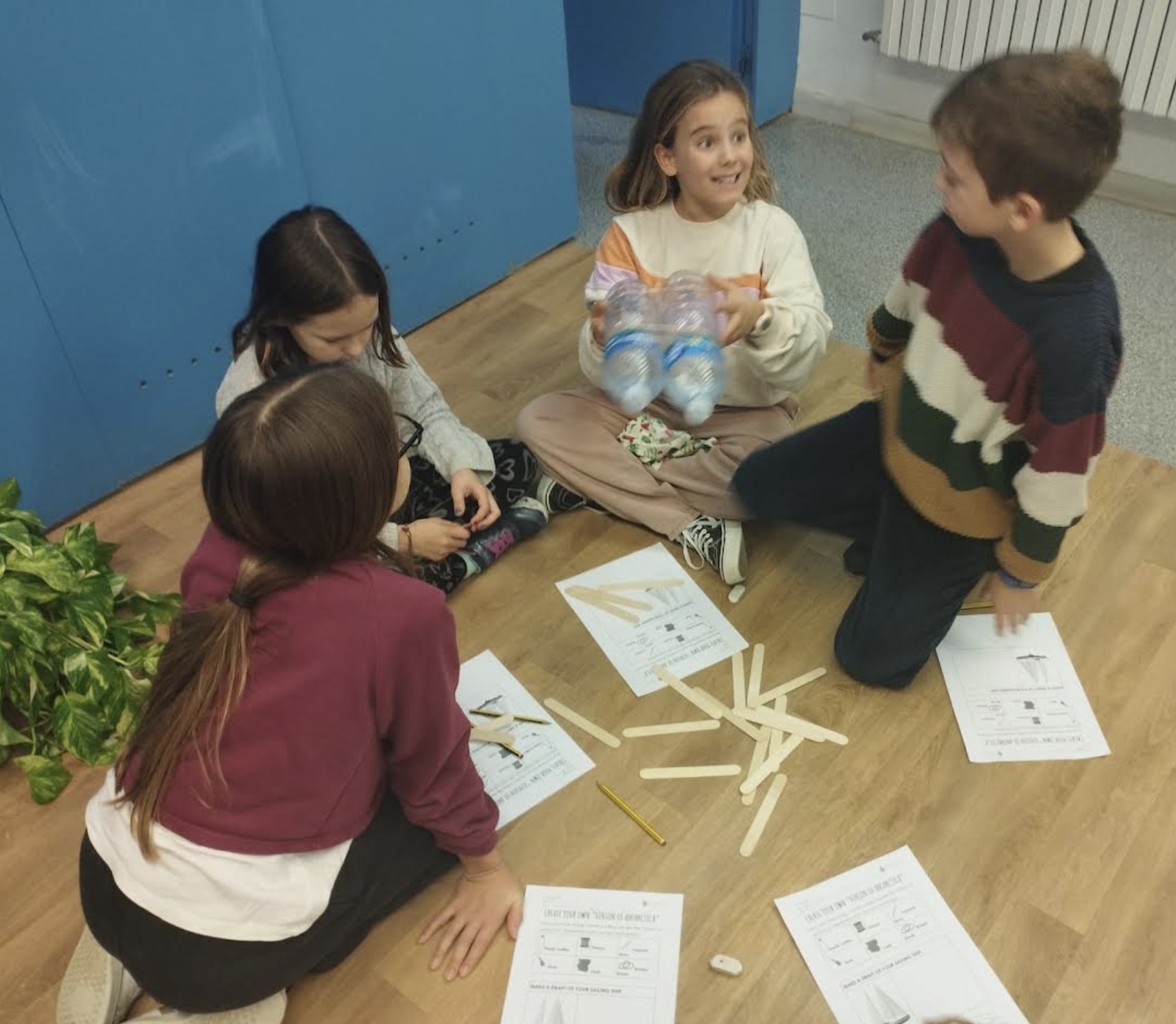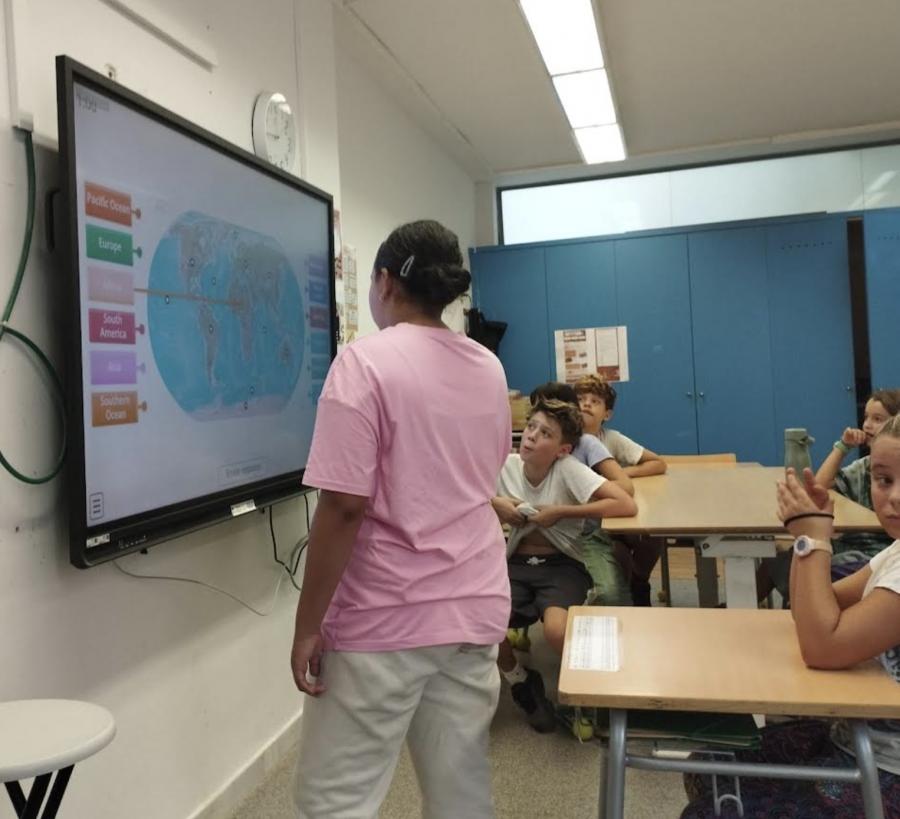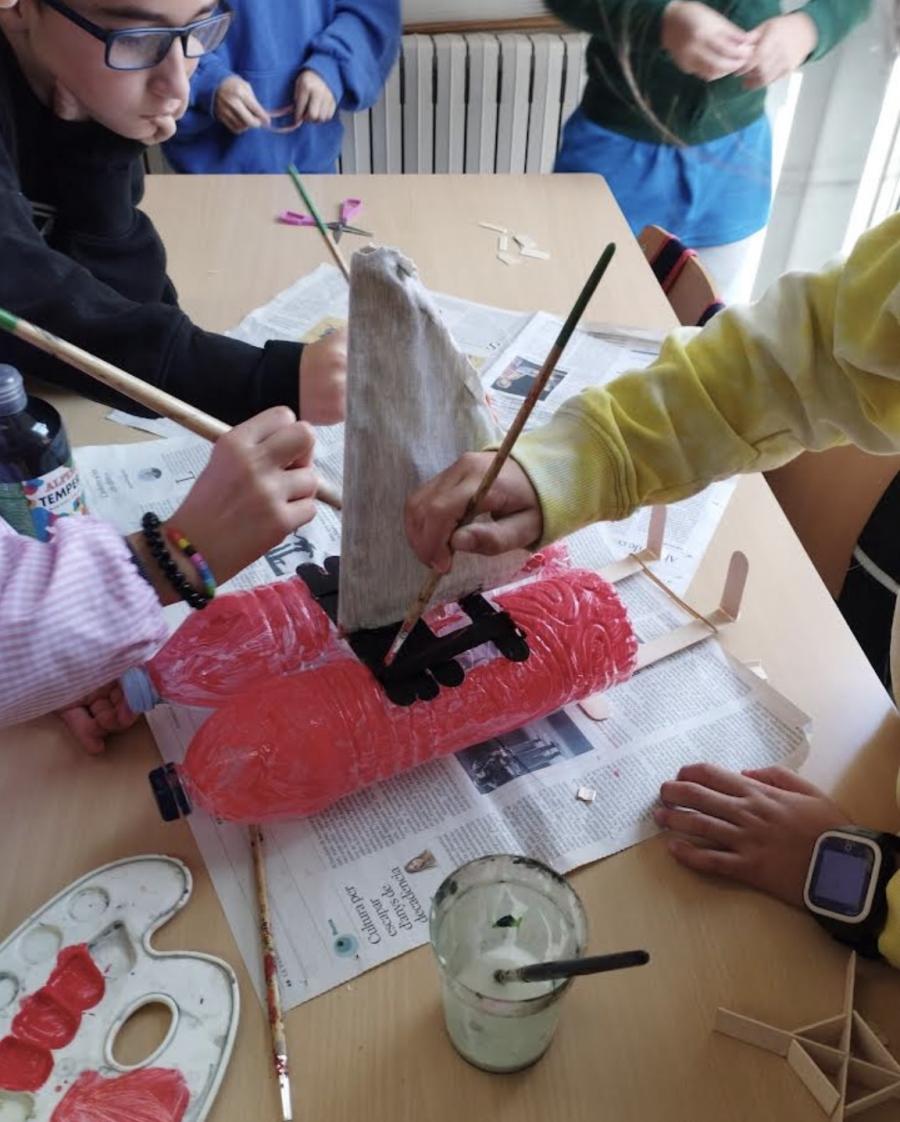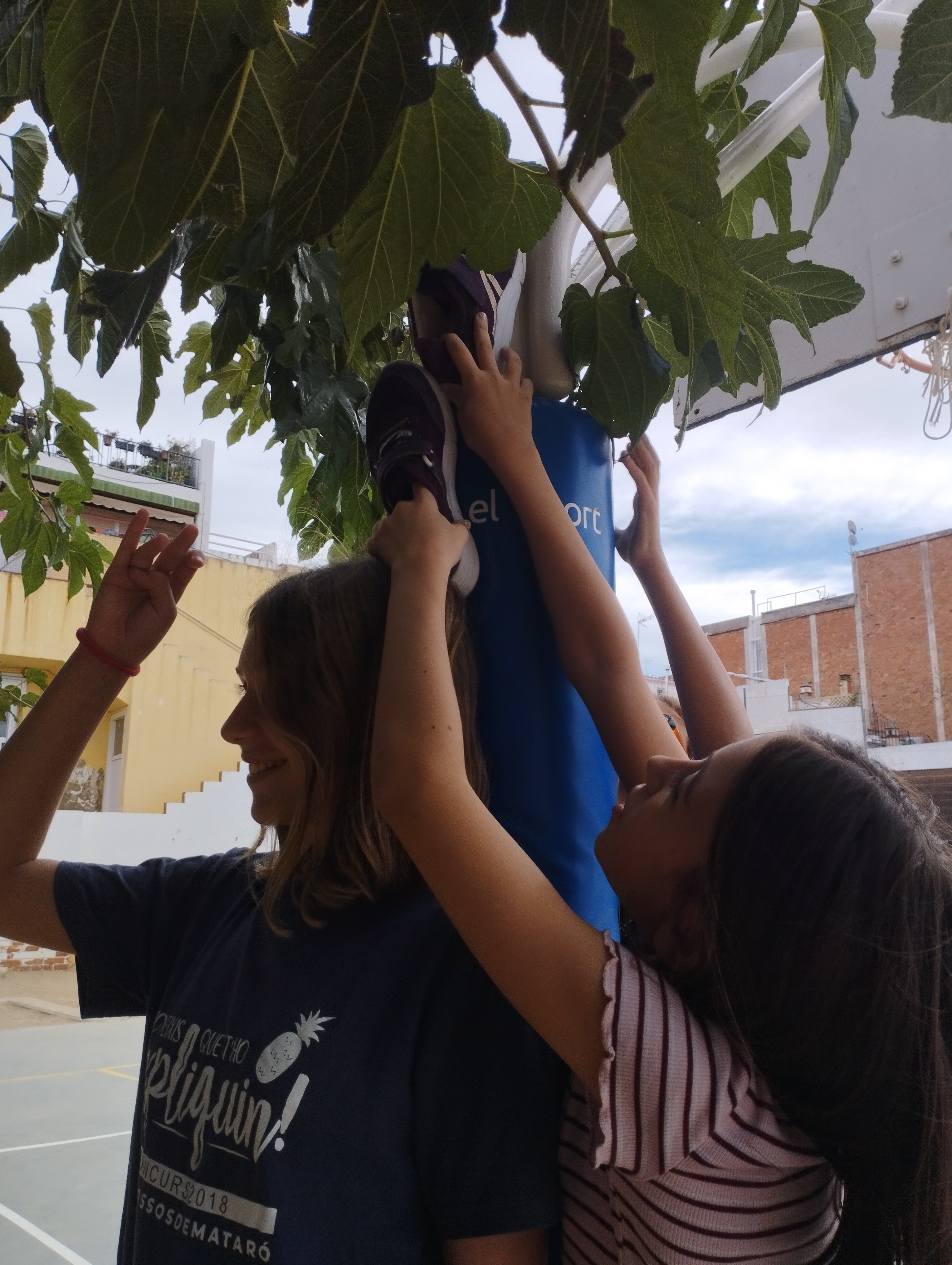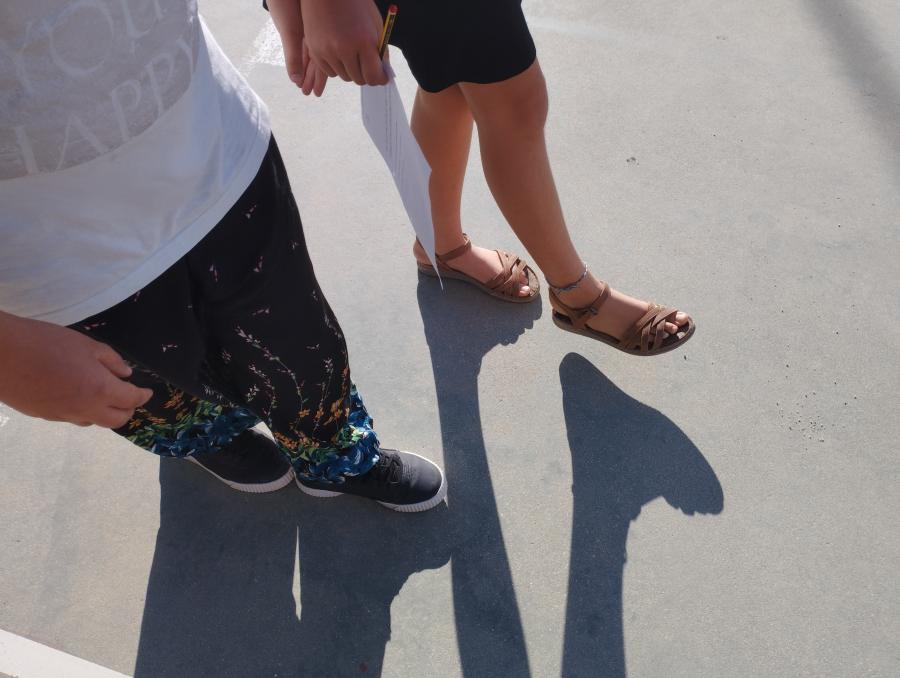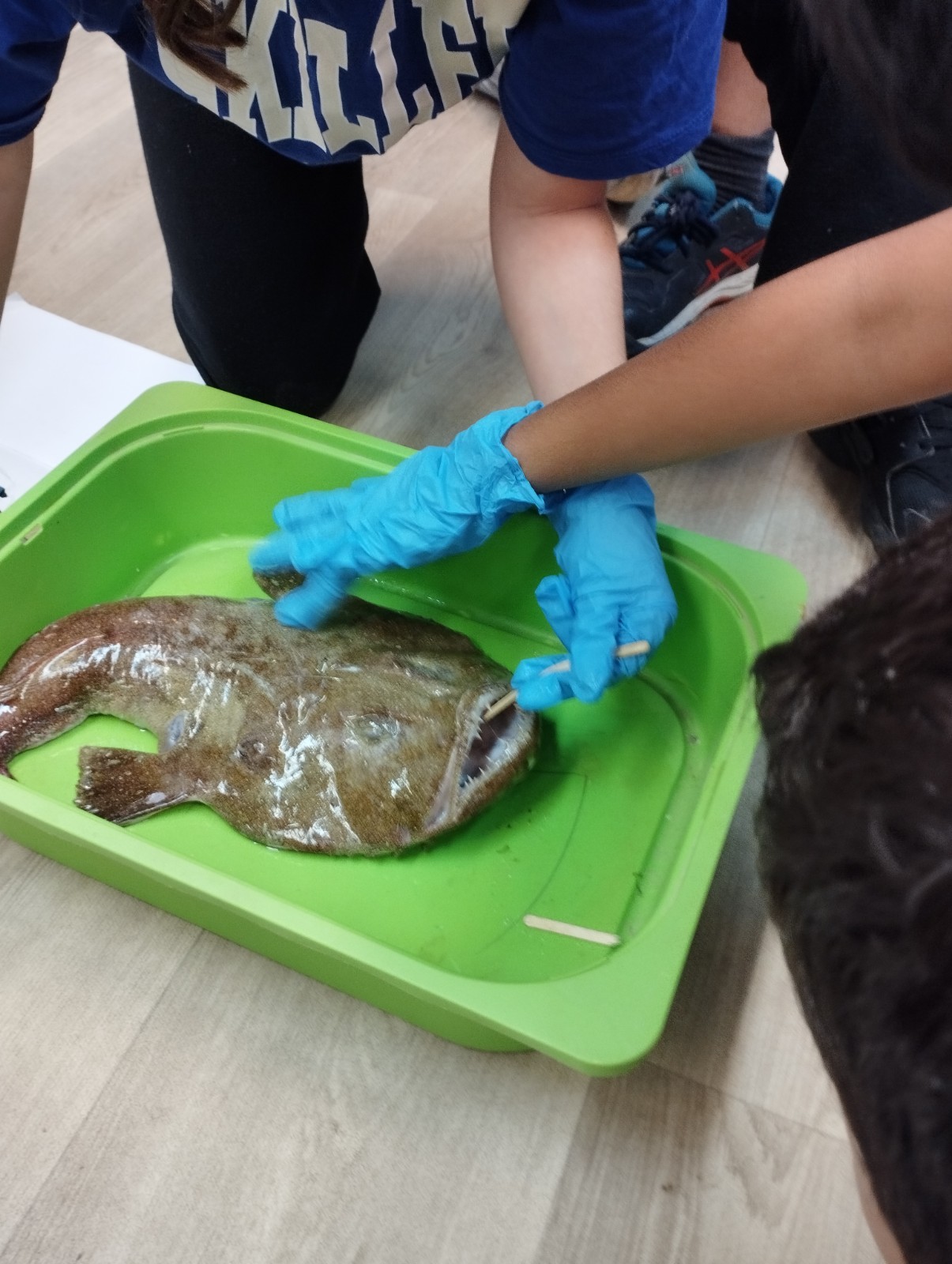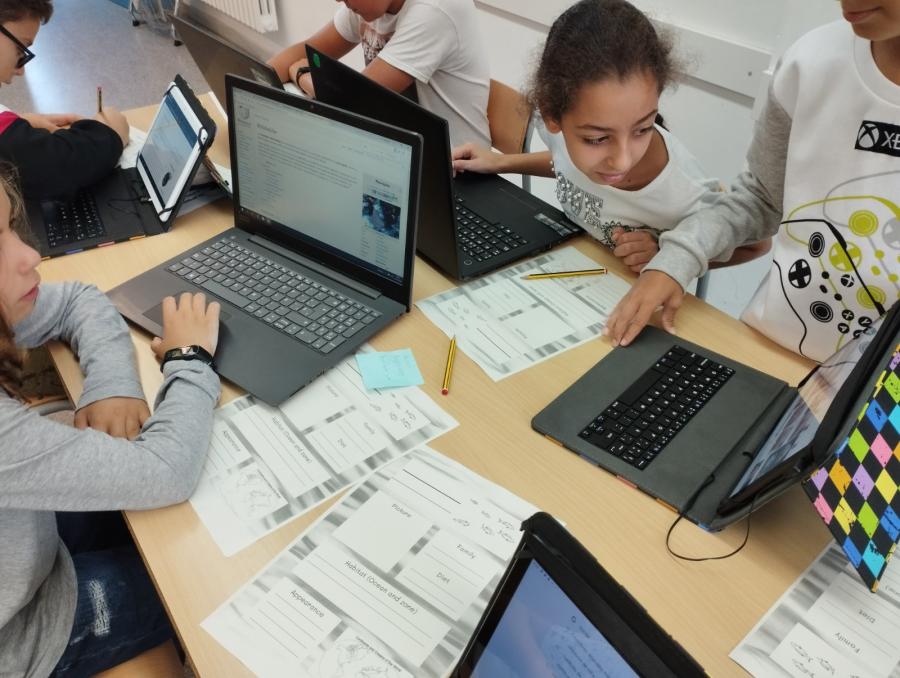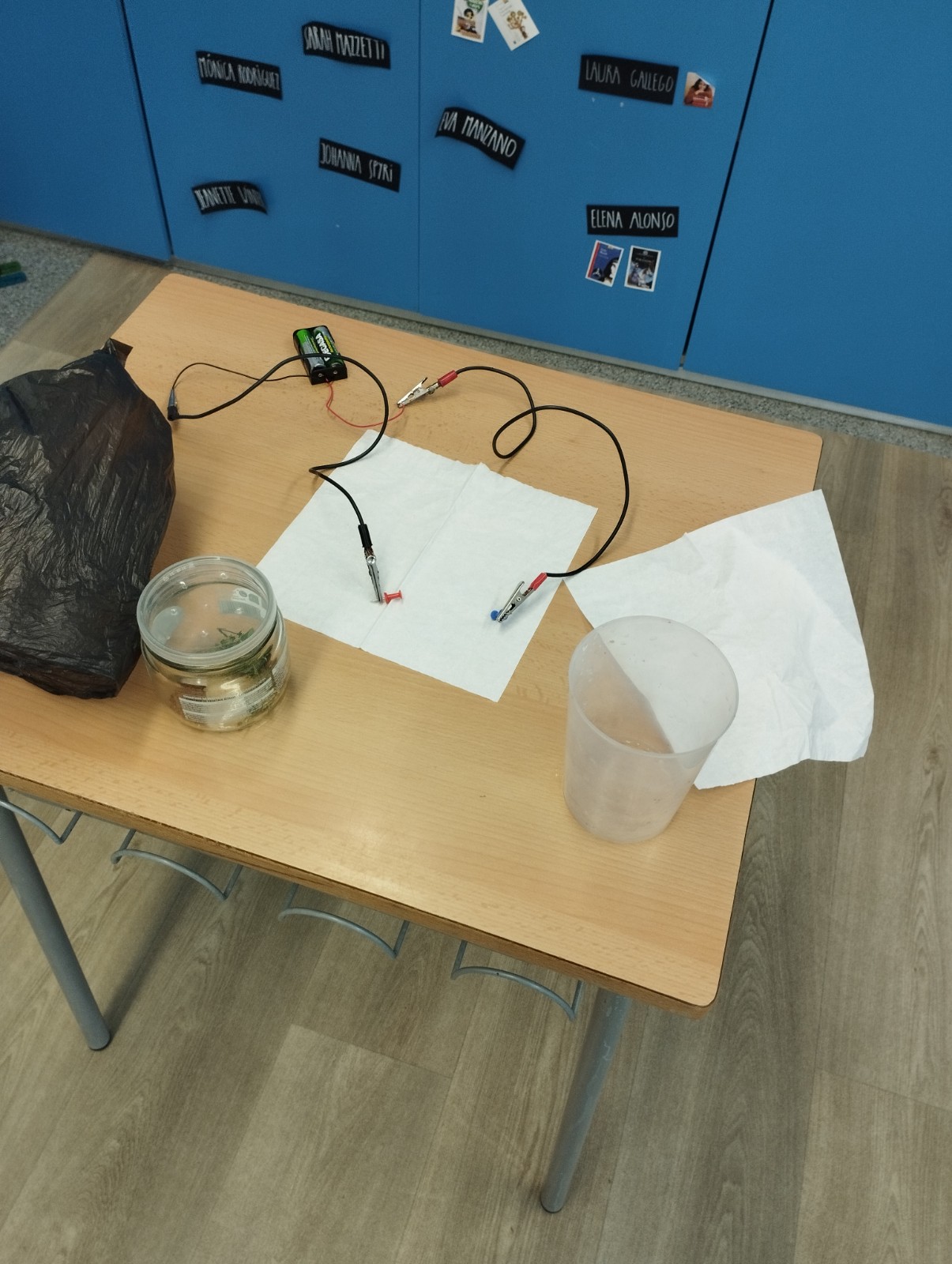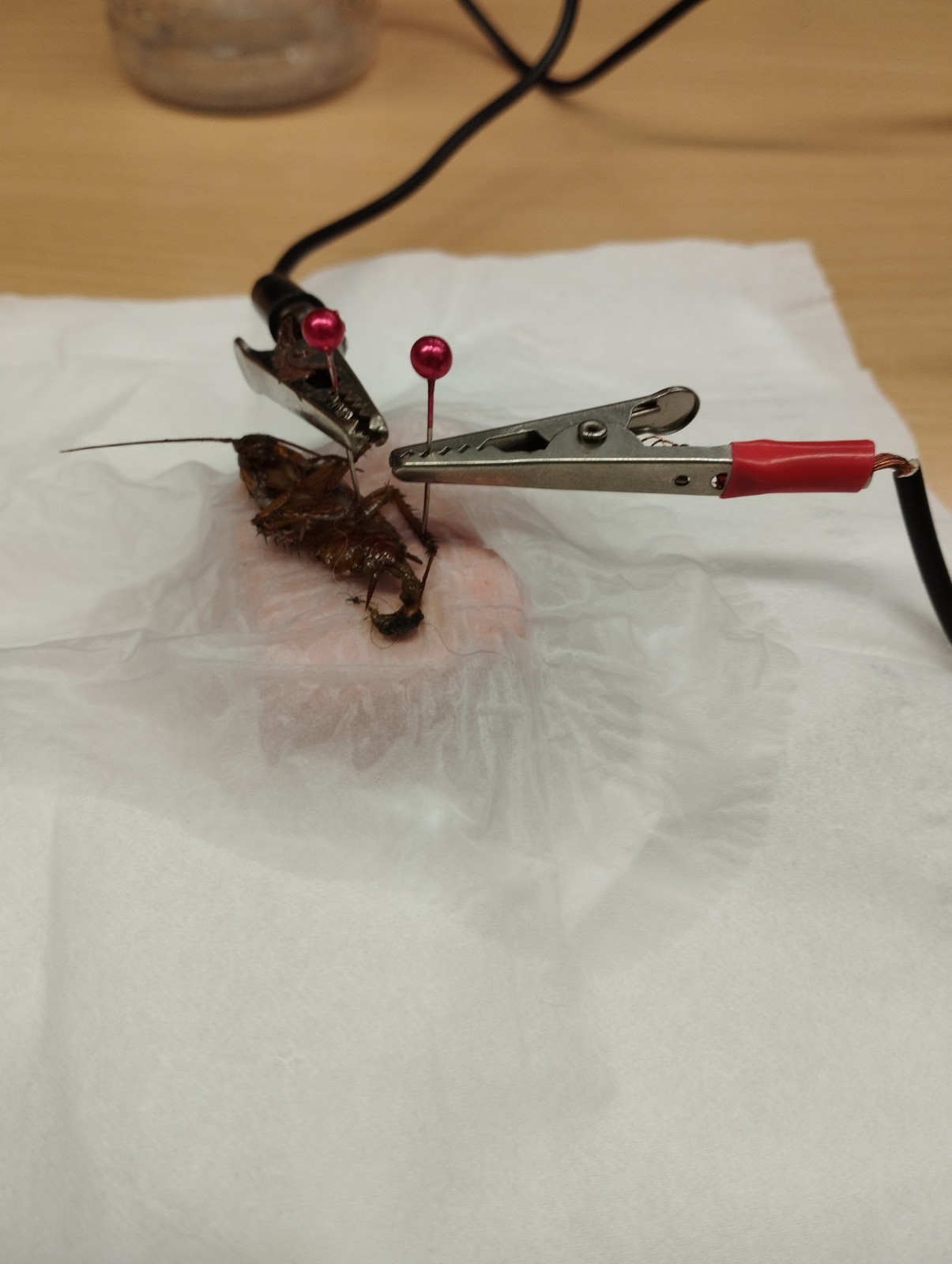El curs 2017-2018 el Departament d'Educació inicia el programa d’innovació pedagògica Generació Plurilingüe (GEP). La finalitat d’aquest programa és millorar la competència en llengües estrangeres de l’alumnat, afavorint el seu creixement acadèmic i posterior inserció laboral, i capacitant-lo per interactuar amb el món en diverses llengües i de manera crítica.
Democracy and Elections
[EN] – The French Revolution ended with the Ancient Regime. The King is dead. Now, what? During this project us, the students of 6th grade, understood the origins of modern democracy, what political parties are and how do they work. Finally, we were divided by political parties and we started a political campaign to decide who would be the President and what games would we play at the playground during two weeks. We made an election, we counted and finally we had to do an investiture session where pacts had to be made.
[CA] – La Revolució Francesa va acabar amb l'Antic Règim. El rei és mort. Ara, què? Durant aquest projecte, els alumnes de 6è de primària, vam entendre els orígens de la democràcia moderna, què són els partits polítics i com funcionen. Finalment, vam estar dividits per partits polítics i vam començar una campanya política per decidir qui seria el President i quins jocs jugaríem al pati durant dues setmanes. Vam fer unes eleccions, vam fer un recompte i finalment vam haver de fer una sessió d'investidura on es van haver de fer pactes.
The Ship
[EN] – In Fifth we have followed the Vinson of Antarctica's voyage and in GEP we have learned the difference between seas and oceans, which are the five oceans and locate with the help of Google Earth the route and the countries where this ship was stopping on the way to the frozen continent. Finally we learned the parts of a boat in Catalan and English and started to create a sailing ship with recycled material in small groups. Finally we went to try them at sea to see if they float or not.
[CA] – A Cinquè hem seguit la ruta del Vinson of Antarctica i a GEP hem après la diferència entre mars i oceans, quins són els cinc oceans i ubicar amb l'ajuda del Google Earth la ruta i els països on anava parant aquest vaixell de camí al continent austral. Finalment vam aprendre les parts d'un vaixell en català i en anglès i vam començar a crear un navili de vela amb material reciclats en petits grups. Finalment vam anar a provar-los al mar per veure si suraven o no.
The imperial system
[EN] – How did people measure before the meter was invented? Sixth graders use body parts to solve a couple of mathematical questions. Before the creation of the meter, the English invented the imperial system (still in use today in the United States), where body parts were used to measure different distances (inches, feet, yards and miles). We saw what each of these units is currently used for and decided to apply them to measure our height, the length of the track, etc. Then, one child said that his father, who is a fisherman, uses miles as a unit of distance for boating so we found out how many meters a mile is. We discovered The Daily Mile project, which recommends children to walk a mile a day. Finally, we created a one-mile route in Mataró to get an idea of the distance and went down to the playground to find out how long it took us to do a running mile at a constant pace.
[CA] – Com es mesurava abans que existís el metre? Els nens i nenes de Sisè vam utilitzar parts del cos per tal de solucionar un parell de dubtes matemàtics. Abans de la creació del metre, els anglesos van inventar el sistema imperial (que avui en dia segueix vigent als Estats Units), on s'utilitzaven parts del cos per mesurar diferents distàncies: (polzades, peus, iardes i milles). Vam veure per a què s'utilitza actualment cadascuna d'aquestes unitats i vam decidir aplicar-les per mesurar la nostra alçada, la llargària de la pista, etc. Després un nen va dir que el seu pare, que és pescador, utilitza les milles com a unitat de distància per navegar en vaixell així que vam descobrir quants metres és una milla. Vam descobrir el projecte The Daily Mile, que recomana als infants caminar una milla diària. Finalment, vam crear un recorregut d'una milla a Mataró per a fer-nos una idea de la distància i vam baixar al pati per esbrinar quan tardàvem a fer una milla corrent a un ritme constant.
Under the sea!
[EN] – Fifth grade children have been investigating the ocean with this term's GEP/M.Natural project. They began by reviewing the oceans, their depth, the different layers and the fauna in each one of them. Finally, they headed into the Abyss, the deepest and least known part of our planet. Such was their curiosity about this dark world and its inhabitants that we asked Salvador, fisherman and father of the school, if it was possible to bring an Anglerfish to the classroom to analyze it and see its photophore (the part of the fish that is bioluminescent). And it was done! With the fish in the classroom they were able to touch it, see the parts, talk about why it was deflated (because of the pressure) and finally we drew it.
[CA] – Els nens i nenes de Cinquè han estat investigant el fons marí amb el projecte GEP/M.Natural d'aquest trimestre. Van començar repassant els oceans, la profunditat que tenen aquests, les diferents capes i la fauna que hi ha a cadascuna d'aquestes. Finalment, van endinsar-se a l'abisme (the Abyss), la zona més profunda i menys coneguda del nostre planeta. Tal va ser la seva curiositat sobre aquest fosc món i les seus habitants que vam demanar a en Salvador, pescador i pare de l'escola si era possible que ens portés un rap (Anglerfish) a la classe per poder-lo analitzar i veure el seu fotòfor (la part del peix que és bioluminiscent). I dit i fet! Amb el peix a l'aula van poder tocar-lo, veure'n les parts, parlar de perquè estava desinflat (pressió) i finalment el van dibuixar.
The Roman bridge
[EN] – In Sixth Grade we made the Roman bridge project, since this civilization was the first to build permanent bridges to allow the legions to cross rivers such as the Ebro or the Rhine. The goal was that the bridge could support an entire legion (5,000 soldiers) at least, and we made the parallelism with five milk bricks (five kilos). We built the bridges following models and instructions seen in a presentation with popsicle sticks and the results have been amazing!
[CA] – A Sisè hem realitzat el projecte del pont romà, ja que aquesta civlització fou la primera que construí ponts permanents per a permetre a les legions creuar rius com l'Ebre o el Rin. L'objectiu era que el pont aguantés una legió sencera (5.000 soldats) com a mínim, i nosaltres vam realitzar el paral·lelisme amb cinc brics de llet (cinc quilos). Els ponts els vam construir seguint models i instruccions vistes en una presentació amb palets de polo (popsicle sticks) i els resultats han estat sorprenents!
Can we raise the dead?
[EN] – This second term, the fifth graders have followed Luigi Galvani's steps to find out if something dead can be revived. First we had to differentiate between what is alive and what is not (vital processes). Then, we discovered the experiments that this Italian doctor did with dead frogs. Thanks to these it was discovered that the nervous system works with electrical impulses and that a person can be "revived" with the help of a defibrillator. With the help of some paper clips we did another exercise to find out which part had the most nerve endings. Then we related it all to an admirer of the Italian's experiments, Mary Shelley, writer of the famous Frankenstein. Finally, we were able to experiment with a dead cockroach and we saw how, by applying a certain electric current to the animal's limbs, it moved them.
[CA] – Aquest segon trimestre els alumnes de Cinquè hem seguit es passos de Luigi Galvani per esbrinar si una cosa morta pot reviure. Primer hem hagut de diferenciar entre allò que està viu i all que no`(els processos vitals). Després, hem descobert els experiments que feia aquest doctor italià amb granotes mortes. Gràcies a aquests es va descobrir que el sistema nerviós funciona amb impulsos elèctrics i que es pot "reviure" a una persona amb l'ajuda d'un desfibrilador. Amb l'ajuda d'uns clips vam fer un altre exeriment per descobrir quina era la part amb més terminacions nervioses. A continuació, ho hem relacionat tot amb una admiradora dels experiments de l'italià, Mary Shelley, escriptora del famós Frankenstein. Finalment hem pogut experimentar amb una panerola morta i hem vist com, aplicant certa corrent elèctrica a les extremitats de l'animal, aquest les movia.

